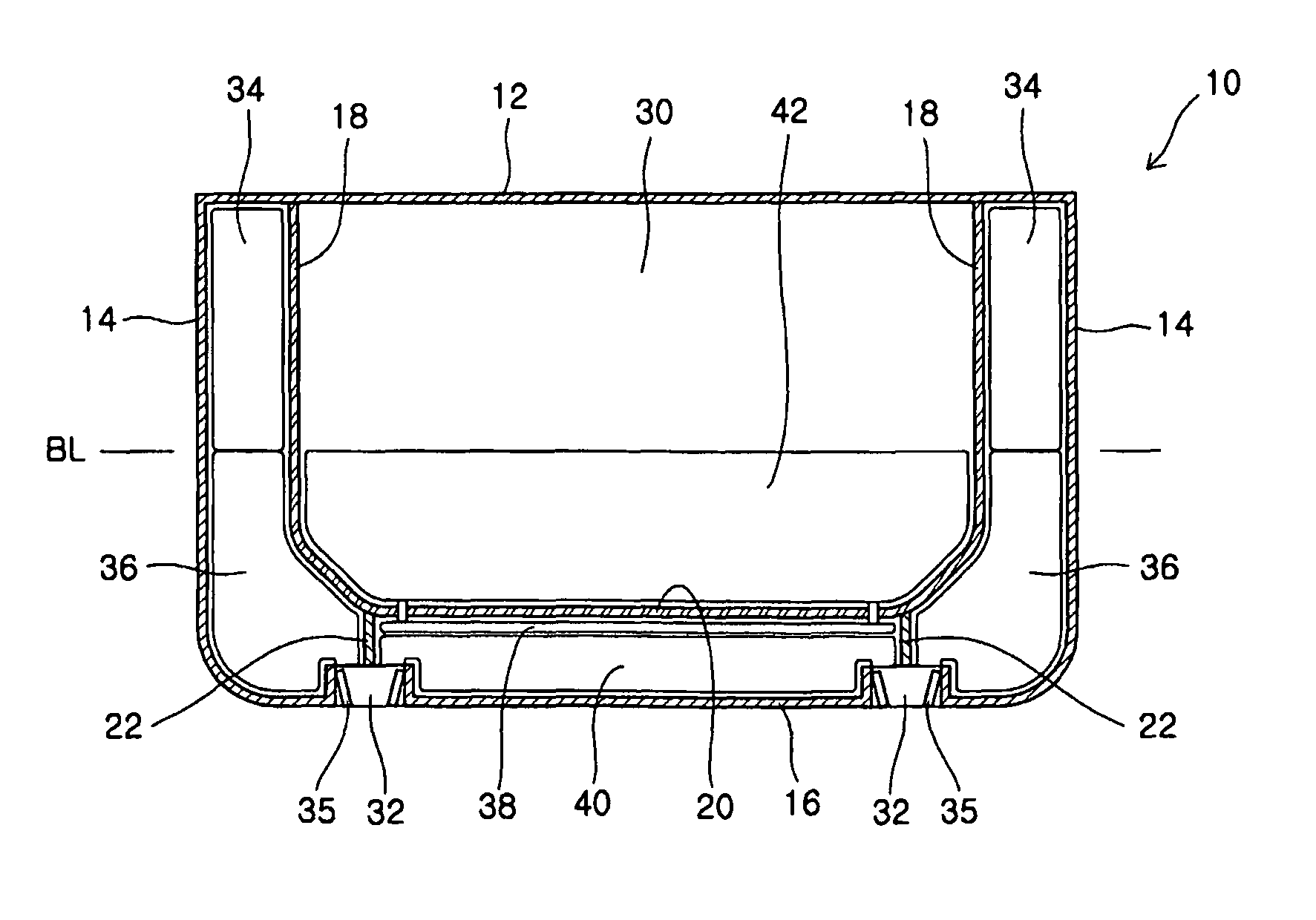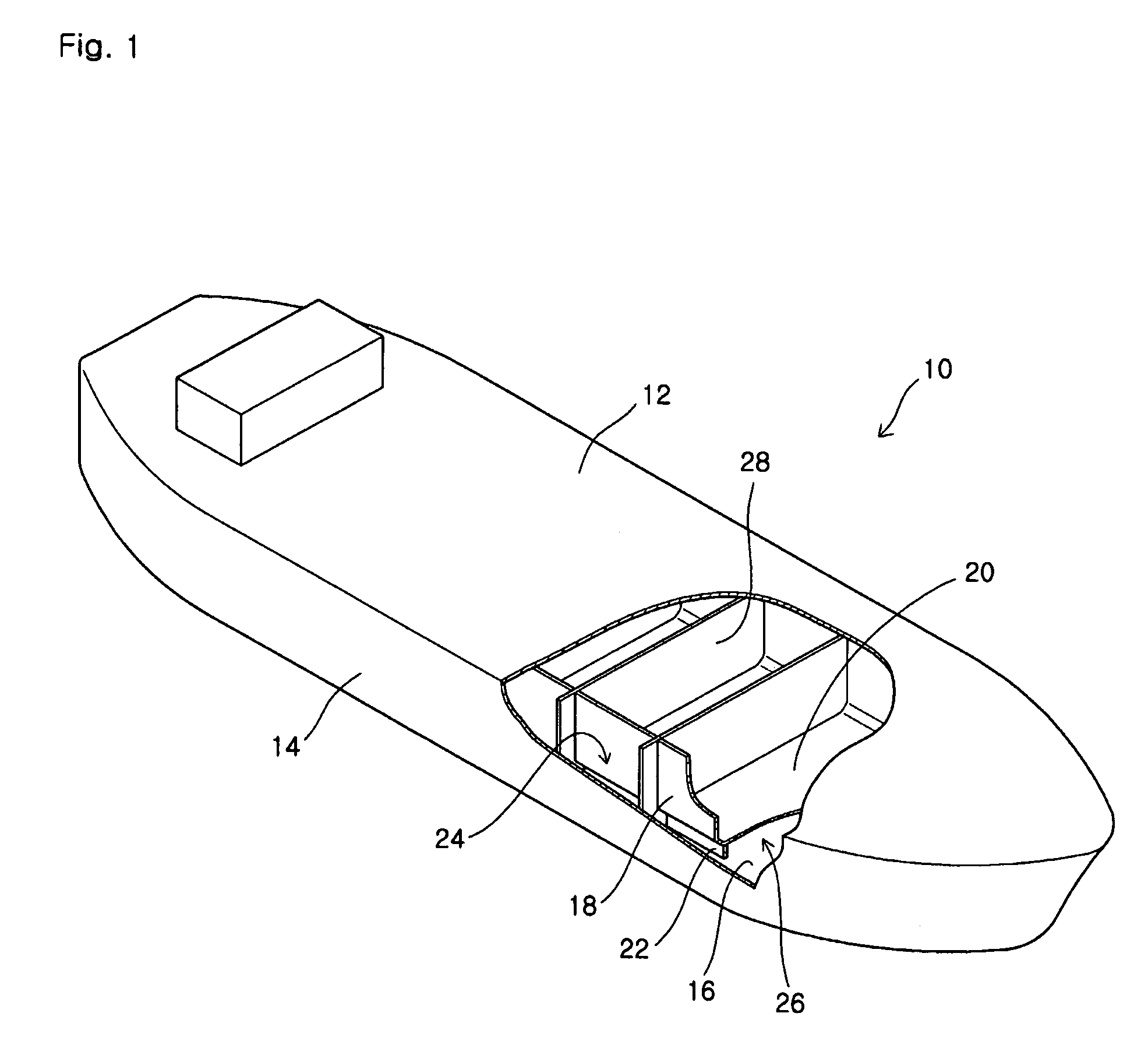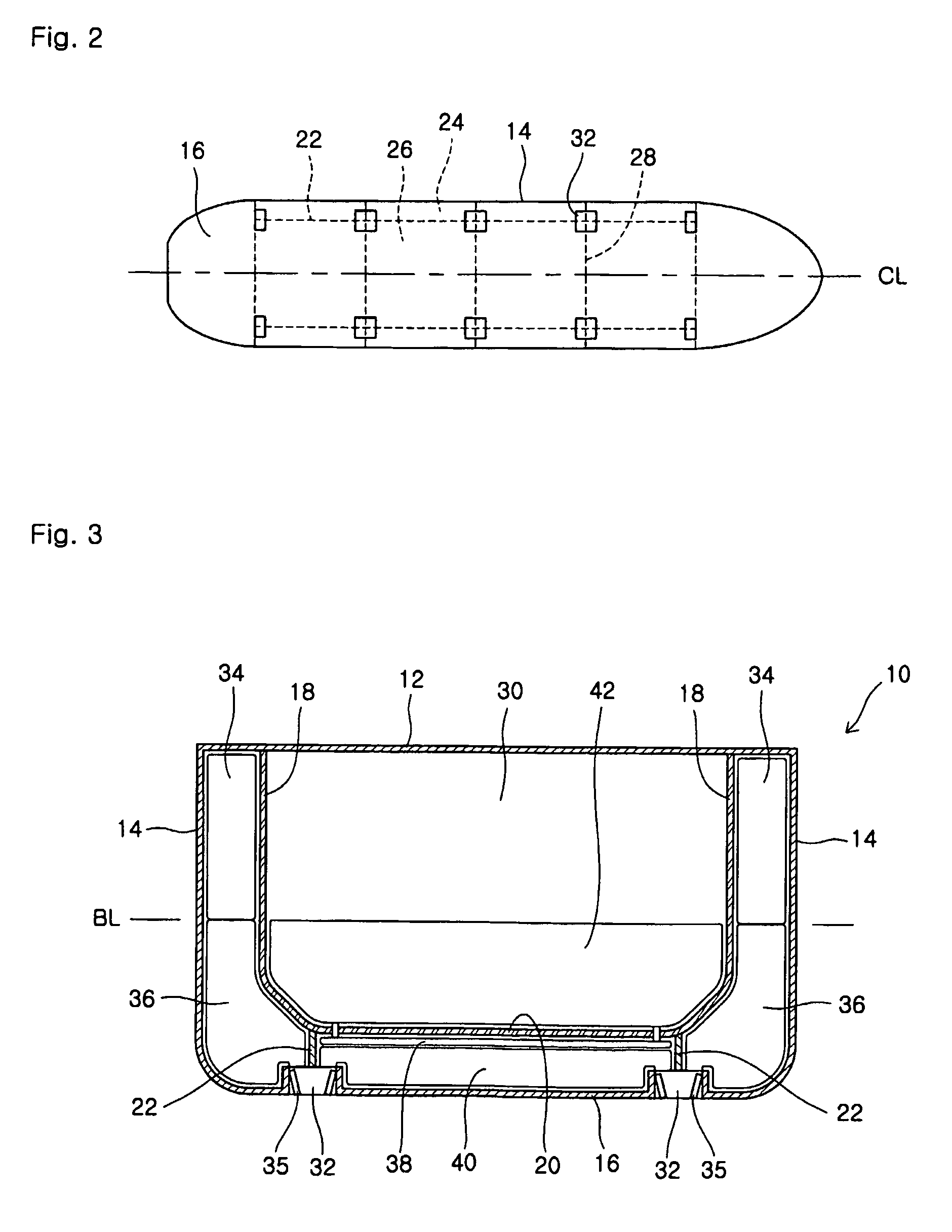Vessel including automatic ballast system using tubes
a technology of automatic ballast and vessel, which is applied in the field of vessels, can solve the problems of unnecessarily spending of exchange of pipes, excessive working expenses, and unnecessary spending of exchange pipes, and achieve the effects of reducing the impact of vessel hull, reducing the cost of vessel repair and maintenance, and contaminating seawater or other problems
- Summary
- Abstract
- Description
- Claims
- Application Information
AI Technical Summary
Benefits of technology
Problems solved by technology
Method used
Image
Examples
Embodiment Construction
[0034]The hull structure of a vessel defines the outline or framework of the vessel and is commonly formed by installing long reinforcing members to a plate member. FIG. 1 shows an example of a hull structure of a vessel according to an embodiment of the present invention. Although reinforcing members are omitted and not shown in the figures herein, those skilled in the art will understand that a variety of reinforcing members such as a keel and a stiffener can be installed at proper positions.
[0035]Referring to FIGS. 1 and 2, a double-hulled vessel 10 of the embodiment according to the present invention includes a deck 12, an outer side shell 14, and an outer bottom shell 16. Further, the vessel 10 includes an inner side shell 18 and an inner bottom shell 20 which are placed within the outer shells 14 and 16, respectively. The vessel 10 also includes cross bulkheads 28 traversing the vessel in a lateral direction. By means of the cross bulkheads 28, an inner space defined by the in...
PUM
 Login to View More
Login to View More Abstract
Description
Claims
Application Information
 Login to View More
Login to View More - R&D
- Intellectual Property
- Life Sciences
- Materials
- Tech Scout
- Unparalleled Data Quality
- Higher Quality Content
- 60% Fewer Hallucinations
Browse by: Latest US Patents, China's latest patents, Technical Efficacy Thesaurus, Application Domain, Technology Topic, Popular Technical Reports.
© 2025 PatSnap. All rights reserved.Legal|Privacy policy|Modern Slavery Act Transparency Statement|Sitemap|About US| Contact US: help@patsnap.com



